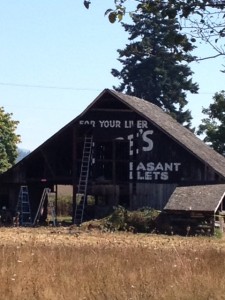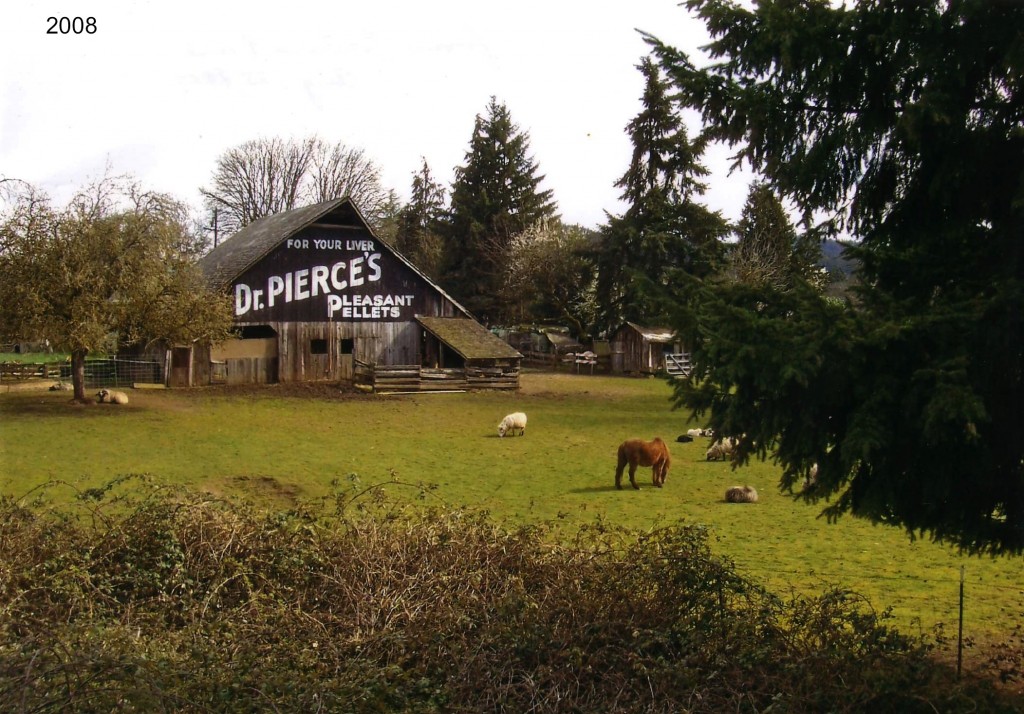
That was my thought when I pulled out the file and sat down to write this account of preservation accomplishments we’ve achieved in the wake of Cottage Grove’s loss of the Dr. Pierce Barn.
Our effort to save the barn ended badly in September 2012. It was a painful one fraught with conflict and confusion, dotted with moments of hope and optimism, then finally brought to an end when the barn came down, board by board.
Once the barn was gone, rather than dwell on our loss and allow it to foment bitterness and disillusionment, we began to take immediate steps to help ensure Cottage Grove made it clear that despite what happened, we value our historic structures. We turned to the code.
The process for demolishing historic buildings outlined in Cottage Grove’s development code seemed fine on paper, but when put to the test in the real world, we came to the conclusion that demolishing historic buildings in Cottage Grove, even those on the National Register, was far too easy. Our code was in serious need of amending.

Next, we made a laundry list of the portions of those codes we liked best. We were especially interested in enacting a provision for demolition denial, but were delighted to find all manner of requirements in other codes that put a far heavier burden on the owner of the historic structure to document that they had indeed tried to sell the property as a historic asset. These requirements included for example, details on where and how long the owner had to advertise the sale, what types of ‘for sale’ signage had to be on the property and for how long, and what documentation about the history of sales and appraisals the owner had to make available to the public. There are plenty of other communities in Oregon that make it clear through their codes that owners of historic properties have a special obligation to see that every alternative to demolition is attempted. We wanted Cottage Grove to be one of those communities.
Once we compiled our “wish list” we sent it to Cottage Grove City Planner Amanda Ferguson for review. Her expertise was invaluable. She translated it all into what we call “code-speak” – language compatible with our code – and agreed that the city would be the applicant, thereby saving the Barn People the code amendment fee. A copy was sent to Restore Oregon and the State Historic Preservation Office for review.
The newly revised code states clearly that “demolition or relocation of historic landmarks erodes the historic fabric of the City of Cottage Grove and shall be denied unless adverse circumstances require such actions.” In addition to denial authority, the revisions redefined the process for demolition permits, which, according to City Planner Amanda Ferguson, was desperately needed. “The changes to the code will provide security for our downtown historic district and other historic resources throughout the city, and City staff was grateful to the initiative and continued support of the Barn People in the development and adoption of this code.”

I started out by saying I didn’t want to relive this, but now I realize it’s the failed attempt to save the barn that I don’t want to relive, not the process by which we improved our code. That process was actually healing and helped bring closure to what would have otherwise been left as a sad story. We hope other communities can benefit from our experience, by skipping the beginning of our story – the painful loss of an irreplaceable and beloved historic structure.

